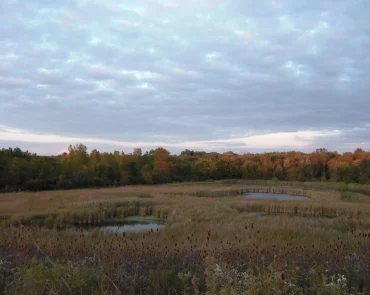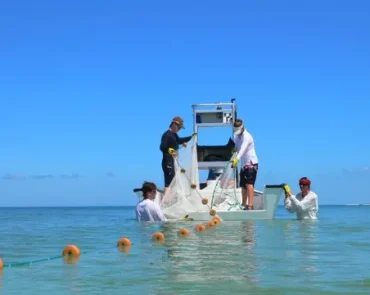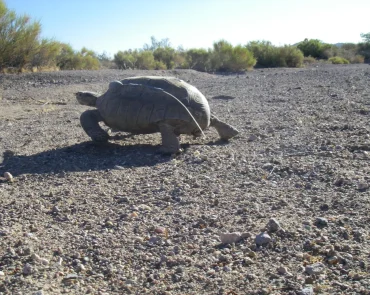Current Research
Wetland protections and mitigation
Wetlands provide diverse benefits to humans, including water quality improvements and flood mitigation properties. Federal protections mean that wetlands are regulated nationwide and impacts to wetlands can require mitigation to be offset. Changing wetland protections, though, can alter when and if mitigation is required, depending on if new rules protect more or fewer wetland types.
Wetland types that have historically experienced the greatest impacts and mitigation efforts can provide insight into potential future trends under new regulatory scenarios. In looking at past patterns of wetland loss and mitigation, the goal of this research is to anticipate how mitigation requirements and demands might shift in response to changing protection levels. patterns under new protection scenarios. In particular, weakened wetland protections, could undermine the long-standing goal of achieving no net loss of wetlands and significantly disrupt the mitigation economy built around compensating for these impacts.

Wetland protections and mitigation

Wetlands provide diverse benefits to humans, including water quality improvements and flood mitigation properties. Federal protections mean that wetlands are regulated nationwide and impacts to wetlands can require mitigation to be offset. Changing wetland protections, though, can alter when and if mitigation is required, depending on if new rules protect more or fewer wetland types.
Wetland types that have historically experienced the greatest impacts and mitigation efforts can provide insight into potential future trends under new regulatory scenarios. In looking at past patterns of wetland loss and mitigation, the goal of this research is to anticipate how mitigation requirements and demands might shift in response to changing protection levels. patterns under new protection scenarios. In particular, weakened wetland protections, could undermine the long-standing goal of achieving no net loss of wetlands and significantly disrupt the mitigation economy built around compensating for these impacts.
Coastal Management, Resilience, and Adaptation
Coastal areas are home to much of the world’s population. As these areas face growing threats from climate change, addressing these challenges in coastal urban centers will require innovative, strategic solutions. Ecosystem-based approaches offer pathways for adaptation by providing both protective and economic benefits.
This research focuses on the “coastal squeeze” that marshes experience as they are trapped between expanding urban development and rising sea levels. To survive, coastal marshes will likely need to migrate further inland in response to sea-level rise. But urban development can block marsh migration corridors.
By exploring the intersection of human mobility driven by flooding and marsh migration driven by sea-level rise, this research aims to identify opportunities to align climate adaptation strategies that reduce flood exposure while preserving space for vital, protective coastal ecosystems to persist and adapt.

Coastal Management, Resilience, and Adaptation

Coastal areas are home to much of the world’s population. As these areas face growing threats from climate change, addressing these challenges in coastal urban centers will require innovative, strategic solutions. Ecosystem-based approaches offer pathways for adaptation by providing both protective and economic benefits.
This research focuses on the “coastal squeeze” that marshes experience as they are trapped between expanding urban development and rising sea levels. To survive, coastal marshes will likely need to migrate further inland in response to sea-level rise. But urban development can block marsh migration corridors.
By exploring the intersection of human mobility driven by flooding and marsh migration driven by sea-level rise, this research aims to identify opportunities to align climate adaptation strategies that reduce flood exposure while preserving space for vital, protective coastal ecosystems to persist and adapt.
Previous Research
Fish behavior and monitoring
Common snook (Centropomus undecimalis) is a recreational game fish that lives in the Caribbean Sea, parts of the Gulf of Mexico, and along the eastern coast of Florida. This study focused on the behavior and breeding habits of common snook on barrier islands in Charlotte Harbor, Fla.
Using tag and recapture methods, we found that common snook return to the same barrier island to spawn and that they even return to specific portions of these islands. This behavior makes common snook especially vulnerable to natural or anthropogenic disturbances. Understanding the movement and spatial patterns of common snook is critical for stock enhancement and management strategies.
This work was completed as a National Science Foundation Research Experience for Undergraduates Fellow.

Fish behavior and monitoring

Common snook (Centropomus undecimalis) is a recreational game fish that lives in the Caribbean Sea, parts of the Gulf of Mexico, and along the eastern coast of Florida. This study focused on the behavior and breeding habits of common snook on barrier islands in Charlotte Harbor, Fla.
Using tag and recapture methods, we found that common snook return to the same barrier island to spawn and that they even return to specific portions of these islands. This behavior makes common snook especially vulnerable to natural or anthropogenic disturbances. Understanding the movement and spatial patterns of common snook is critical for stock enhancement and management strategies.
This work was completed as a National Science Foundation Research Experience for Undergraduates Fellow.
Threatened Species
The desert tortoise (Gopherus agassizii) is a threatened species native to the Mojave and Sonoran Deserts. We used radio telemetry techniques to locate desert tortoises in remote parts of the Mojave Desert to assess their behavior, movement patterns, and susceptibility to a contagious upper respiratory infection.
The findings informed management actions to support the conservation of threatened species by translocating tortoises from a military training area to other locations in the Mojave. The baseline health and behavior characteristics we collected was critical to protecting these tortoises.
This work was completed as a field biologist intern with the United States Geological Survey.

Threatened Species

The desert tortoise (Gopherus agassizii) is a threatened species native to the Mojave and Sonoran Deserts. We used radio telemetry techniques to locate desert tortoises in remote parts of the Mojave Desert to assess their behavior, movement patterns, and susceptibility to a contagious upper respiratory infection.
The findings informed management actions to support the conservation of threatened species by translocating tortoises from a military training area to other locations in the Mojave. The baseline health and behavior characteristics we collected was critical to protecting these tortoises.
This work was completed as a field biologist intern with the United States Geological Survey.
Publications
2025
Niemann-Morris, Jennifer., A.R. Siders, Miyuki Hino, Carolien Kraan, Armen Agopian, A., Christopher Samoray, and Katherine J. Mach. Reconciling divergent priorities in flood adaptation. Environmental Research: Climate. (accepted)
2024
Samoray, Christopher, Miyuki Hino, A. R. Siders, Armen Agopian, and Katharine J. Mach. 2024. “Housing Amenity and Affordability Shape Floodplain Development.” Land Use Policy 144. (article)
Agopian, Armen, Miyuki Hino, A. R. Siders, Christopher Samoray, and Katharine J. Mach. 2024. “A Nationwide Analysis of Community-Level Floodplain Development Outcomes and Key Influences.” Earth’s Future 12 (9) (article)
Siders, A R, Jennifer Niemann-Morris, Miyuki Hino, Elizabeth Shields, Lidia Cano Pecharroman, Tess Doeffinger, Logan Gerber-Chavez, Ju-Ching Huang, Alexandra Lafferty, Salvesila Tamima, Caroline Williams, Armen Agopian, Christopher Samoray, and Katharine J. Mach. 2024. “How Local Governments Avoid Floodplain Development through Consistent Implementation of Routine Municipal Ordinances, Plans, and Programs.” Oxford Open Climate Change 4 (1) (article)
2011
Adams, Aaron J., Jessica E. Hill, and Christopher Samoray. 2011. “Characteristics of Spawning Ground Fidelity by a Diadromous Fish: A Multi-Year Perspective.” Environmental Biology of Fishes 92 (3): 403–11. (article)